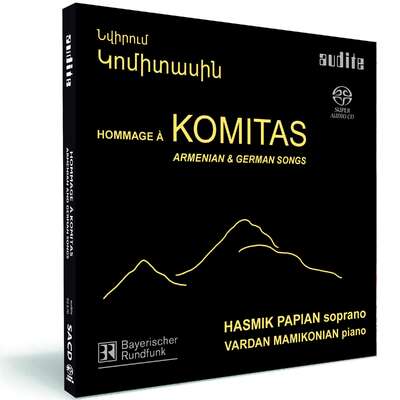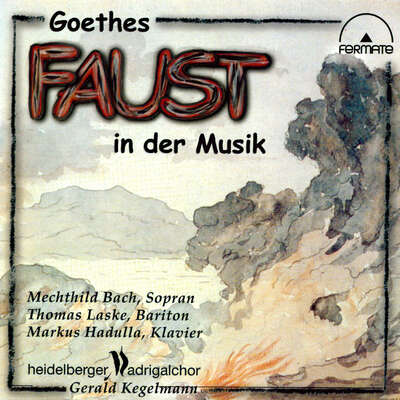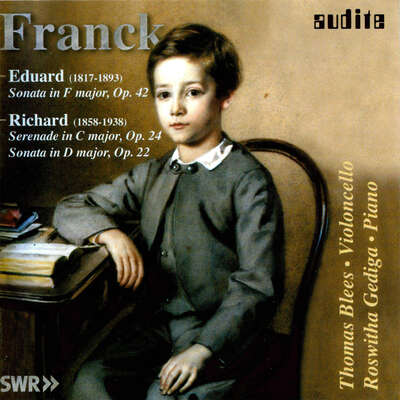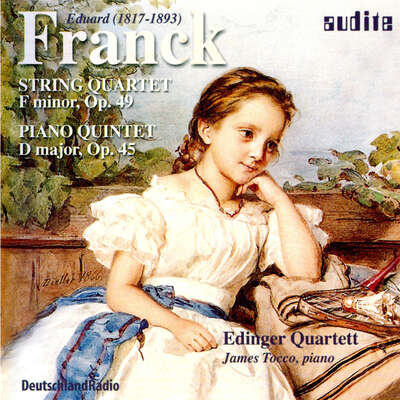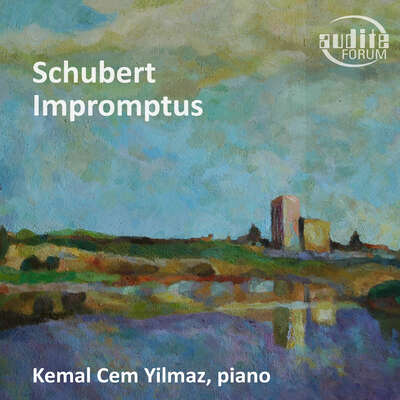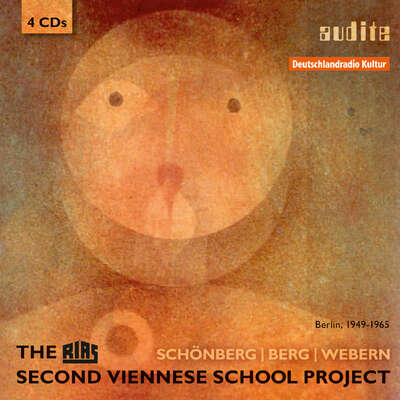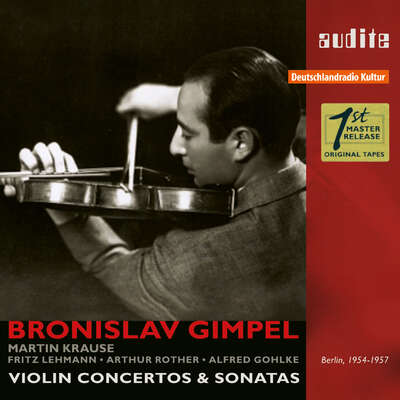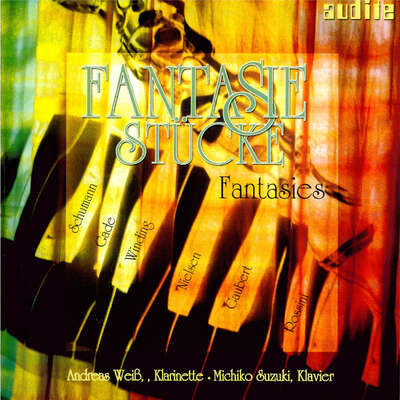
The Armenian monk Soghomon Soghomonian , better known by his priest’s name of Komitas, collected hundreds of folksongs around 1900 during the course of his travels through the Armenian highlands between Van Lake, the Black Sea and the southern Caucasus. These songs, handed down orally over the...more
"All of these are beautifully performed by two outstanding young Armenian artists, soprano Hasmik Papian, and pianist Vardan Manikonian. A very special release for those interested in folk music, very well recorded with performers in front, ambient sound from the rear." (classicalcdreview.com)
Details
| Hommage à Komitas | |
| article number: | 92.570 |
|---|---|
| EAN barcode: | 4022143925701 |
| price group: | ACX |
| release date: | 1. September 2006 |
| total time: | 73 min. |
Bonus Material
Informationen
The Armenian monk Soghomon Soghomonian, better known by his priest’s name of Komitas, collected hundreds of folksongs around 1900 during the course of his travels through the Armenian highlands between Van Lake, the Black Sea and the southern Caucasus. These songs, handed down orally over the centuries, express all the archaism of this ancient people’s unmistakeable culture – a culture than was nearly extinguished in the genocide of the Armenians during the Ottoman Empire from 1915 to 1917. Komitas was himself a victim of mass arrests and deportation in April 1915; although he escaped being murdered, the experience left him a mentally broken man and he spent the rest of his life in psychiatric institutions. This composer and ethnomusicologist, educated in Berlin amongst other places, also occupied himself with the liturgical tradition of the Armenian Apostolic Church; today he is considered the founder of classical modern Armenian music. He set a portion of his collected folk melodies as arts songs (and also choral works). This SACD aims to present a representative recording of the best-known songs of this cultural treasure to a wider listening public; this music is largely unknown except in Armenia and amongst the worldwide Armenian Diaspora. The immediately gripping Lieder, so typical of the Christian-Armenian identity on the point of intersection between Orient and Occident, tell of majestic mountains and of longing for the lost homeland, of the profound and ever-continuing suffering of this people, as well as of love.
Alongside 26 Armenian Lieder altogether, the CD also contains nine Lieder to texts by German poets (including Goethe, Lenau and Uhland) set by Komitas during his period of study in Berlin. In these Lieder, recorded here for the first time, one can hear how familiar the Armenian composer was with the Western tradition extending from Schubert to Hugo Wolf and Richard Strauss. The booklet includes the complete Lied texts, printed in Armenian, German, English and French, as well as a detailed text on the life and work of Komitas.
Hasmik Papian has been at home on the world’s great operatic stages for many years. She has regularly appeared in roles including Tosca, Aida and Norma at the Met, La Scala, the Bastille and the State Operas of Berlin, Munich, Stuttgart, Dresden and Vienna, whilst simultaneously maintaining a lively relationship with her native Armenia. Hasmik Papian has already presented recitals of Komitas in London’s Wigmore Hall, in Brussels, Munich and Washington, amongst other places.
The young Armenian pianist Vardan Mamikonian performs regularly in renowned international concert halls such as Carnegie Hall, the Herkulessaal in Munich, the Tonhalle Zurich and the Salle Gaveau in Paris; alongside the classical-romantic repertoire (Liszt, Chopin, Rachmaninov, etc.) he has also become well known for his interpretations of the works of the Armenian composer Arno Babadjanian.
The present SACD production presents a number of special features, both in terms of content and of interpretation. These are reflected in the exclusive appearance of the SACD, with its visually convincing hard-cover packaging and golden foil embossing – sure signs of high quality and elegance.
Reviews
www.midilibre.com | 27 septembre 2008 | Michèle Fizaine | September 27, 2008 Classique Hasmik Papian dans la lumière de l'Arménie
L'Orchestre sort les partitions Muriel Perpigna et Swingirland ou le jazzMehr lesen
Le Républicain Lorrain | 22. Janvier 08 | January 22, 2008 La diva arménienne
Classique samedi La diva arménienne L'Orchestre national de LorraineMehr lesen
Muzyka21 | 5 (82) - maj 2007 | Wilfried Górny | May 1, 2007
Hasmik Papian jest jedną ze śpiewaczek najbardziej cenionych przezMehr lesen
Fanfare | May/June 2007 | Steven Ritter | May 1, 2007
1869 saw the birth of the future priest Komitas (Soghomon Soghomonian in the world), a man who is hailed as an Armenian national hero, yet is also aMehr lesen
Though profoundly religious, he was also haunted by his early ordination. (Armenian priests, like most Eastern priests, are allowed to marry before ordination, but not after.) He was enamored of one of his favorite singers and biggest supporters, Marguerite Babayan, who was to turn up at varying points in his life, and the question remains open as to the depth of his relationship with her, though he did continue to dress in clerical clothing his whole life. He was a profoundly sensitive and rather ill man, whose last years were plagued by what some have described as mental illness, others by what we today would call “post-traumatic stress syndrome.”
Komitas certainly had reason for this. In 1915, after years of established fame, he was arrested in Constantinople—where he was one of a number of noted Armenian intellectuals residing in the city at that time—and deported by the Turks. What he witnessed was no less than the now-infamous Armenian genocide at the hands of the Turks, where some two million people perished. When he was brought back in 1916, his life was never quite the same, and many years were spent in various psychiatric institutions and programs for treatment. He died 20 years later, in 1935.
This tragic yet brilliant story, along with the mysteries surrounding different incidences in his life, only adds to the aura of the man who is called the “Armenian Bartók”; indeed, he is rightly recognized as the “Father of Armenian classical music.” Music in Armenia up to that time had been exclusively religious, but as in so many other countries a vast amount of secular and non-religious music existed among the people in the guise of folk music. Komitas traveled the land and wrote down thousands of these melodies, and incorporated them into his own music. For this he incurred the wrath of the ecclesiastical authorities and fought a constant battle against them, often having to take secondary positions in the church since they were so against him. But his music, both secular and sacred, gained enormous popularity, and the composer’s standing with the people was never in question. Today he is regarded as perhaps the greatest cultural hero the country has ever known—quite a feat for this unassuming little priest with the golden voice that so enchanted people in his youth, who sang praises to God in middle age, and persuaded a whole generation of countrymen of the value of art and the Armenian soul found in it.
This album, “Hommage à Komitas,” is a collection of his Armenian songs and a world premiere of his German songs, set earlier in life, by two of the leading artists of the country today. The Armenian songs are all of a piece, lonely, meditative, stoically bittersweet, and haunting, though many might find them easier to digest in smaller portions. They are not unlike the religious music of Armenia, but the texts betray their secular inspiration, suitable for any romantic composer. The German songs have hints of Wolf and early Strauss, and while not as good as the works of those masters, still maintain a distinct flavor about them. I am unsure as to whether I can agree with Debussy, whose opinion of Komitas was of the highest regard when he said “Brilliant Father Komitas! I bow before your musical genius!” But it does show that the devout little man attracted the attention of some major players in the classical world, and as such deserves an honest evaluation from all of us.
The sound is spectacular. This is the first SACD issue of piano and voice that I have ever heard, and the results are most gratifying, with excellent balance distributed among the five speakers. Komitas may not be for everyone, but if the hints given above attract you at all, you will not be disappointed.
Ópera Actual | OA 100 (mayo de 2007) | Xaver Cester | May 1, 2007
Entre la nómina de pueblos machacados por la historia -o mejor dicho, porMehr lesen
American Record Guide | May/June 2007 | Boyer | May 1, 2007
Komitas (1869-1935), born Soghomon Soghomonian, took the name he is known by following his ordination as a priest of the Armenian Church in 1893. HisMehr lesen
Komitas’s music has been discussed in these pages only a few times (July/Aug 1990, July/Aug 1999, Mar/Apr 1996). His folk settings, which appeared in a series of volumes beginning in 1895, have a strangely modern sound, now strongly suggestive of the exotic moods that would later be explored by Alan Hovhaness in the 1950s, now recalling Ravel’s Greek songs of 1904-6. His German songs are cast in a more conventional late romantic style.
Soprano Hasmik Papian handles her part well enough, but one wishes for a bit more relaxation in her voice. Always there is a suggestion of forcing, as if the tessitura were too high for her natural range. Audite’s engineers also cloud the matter by including too much (probably artificial) reverberation in the sound picture, some of which may be a result of the processing for SACD.
The handsome booklet is marred by some awkward notes. Texts and multilingual translations are thoughtfully included.
Despite its faults, one hopes that the album will stir more interest in the work of Komitas and Armenian folk music.
www.anaclase.com | 4/2007 | Hervé Kœnig | April 1, 2007
La France fête actuellement l'Arménie, ce qui invite le mélomane àMehr lesen
Armenisch-Deutsche Korrespondenz | Nr. 133/134 - Jg. 2006/Heft 3 & 4 | Ludolf Baucke | February 23, 2007
Armenisch und abendländisch
Compact Disc mit Komitas-Liedern
Der am 26.09.1869 in Gudina (heute Kütahya, Kleinasien) geborene und unterMehr lesen
www.classicalcdreview.com | February 2007 | R.E.B. | February 1, 2007
Audite's SACD features music of Armenian composer Father Komitas who wasMehr lesen
klassik.com | Dezember 2006 | Andreas Schubert | December 13, 2006 | source: http://magazin.k... Armenische Seele
‘Armenien wird leben, solange die armenische Musik lebt.’ Und sie amMehr lesen
www.diverdi.com | Diciembre 2006 | Norberto Tauste | December 1, 2006 Komitas – Un homenaje
En los albores del siglo XX, el monje armenio Komitas compiló centeneraresMehr lesen
Fono Forum | 12/2006 | Thomas Schulz | December 1, 2006 Der armenische Bartók
Wenn es ihn nicht gegeben hätte, wäre vielleicht der unvergleichliche Schatz der armenischen Volksmusik für immer verloren gegangen: SoghomonMehr lesen
Komitas wird oft allzu einseitig als Sammler von Volksmusik betrachtet; dabei war er auch ein Komponist von großer Eigenart, der in seinen Liedern die Grundzüge der armenischen Folklore zu etwas sehr Persönlichem verarbeitete, das in der Musik des beginnenden 20. Jahrhunderts keine Vorbilder hat. 26 dieser Lieder präsentiert die armenische Sopranistin Hasmik Papian im Duo mit dem Klaviervirtuosen Vardan Mamikonian auf sehr geschmack- und gefühlvolle, jedoch nie sentimentalisierende Art; man spürt die tiefe Verbundenheit der Interpreten mit der Musik ihres Landsmanns. Als Zugabe gibt es neun bislang größtenteils unveröffentlichte Lieder auf deutsche Texte, die Komitas während seines Studiums in Berlin zwischen 1896 und 1899 schrieb – sympathische Miniaturen, die das Bild dieses Komponisten ergänzen, ohne indes Wesentliches hinzuzufügen.
Pizzicato | 11/2006 | Rémy Franck | November 1, 2006 Die Lieder des Komitas
Der armenische Geistliche Pater Komitas (1869-1935) war ein eminenter Musiker. 1915 bewahrte ihn das Schicksal auf wundersame Weise vor dem GenozidMehr lesen
Komitas hatte also, wie Bartok und Kodaly, Volksmusik gesammelt und dazu Armenien kreuz und quer bereist. Er komponierte aber auch viele eigene Lieder (u.a. auf Texte von Goethe, Lenau, Storm und Uhland) und blieb dabei dem Stil des armenischen Lieds treu. Aus dem, was aus seinen Sammlungen erhalten geblieben ist, schöpften die armenische Sopranistin Hasmik Papian, eine Sängerin, die uns hier in Luxemburg in so manchen denkwürdigen Opernaufführungen schon so viele schöne Stunden bescherte, und der armenische Pianist Vardan Mamikonian, 35 Titel, die ein eindrucksvolles Programm ergaben, dessen Wirkung man sich nicht entziehen kann, sofern man bereit ist, dieser wunderschönen Musik und den tiefschürfenden Texten seine Aufmerksamkeit zu widmen.
Partituren | Nr. 7 - November/Dezember 2006 | Volker Tarnow | November 1, 2006
Der Sopran Hasmik Papians, sehnsuchtsvoll und weithin tragend, dringt wie von fernen Bergen zu uns herüber. Pater Komitas betrifft jeden Menschen, erMehr lesen
www.parutions.com | 27/10/2006 | Jean-Jacques Millo | October 27, 2006
Considéré comme le Bartok arménien, Komitas laisse, comme son homologueMehr lesen
Armenpress | August 26, 2006
The new CD of world-famous soprano Hasmik Papian dedicated to Komitas hasMehr lesen

